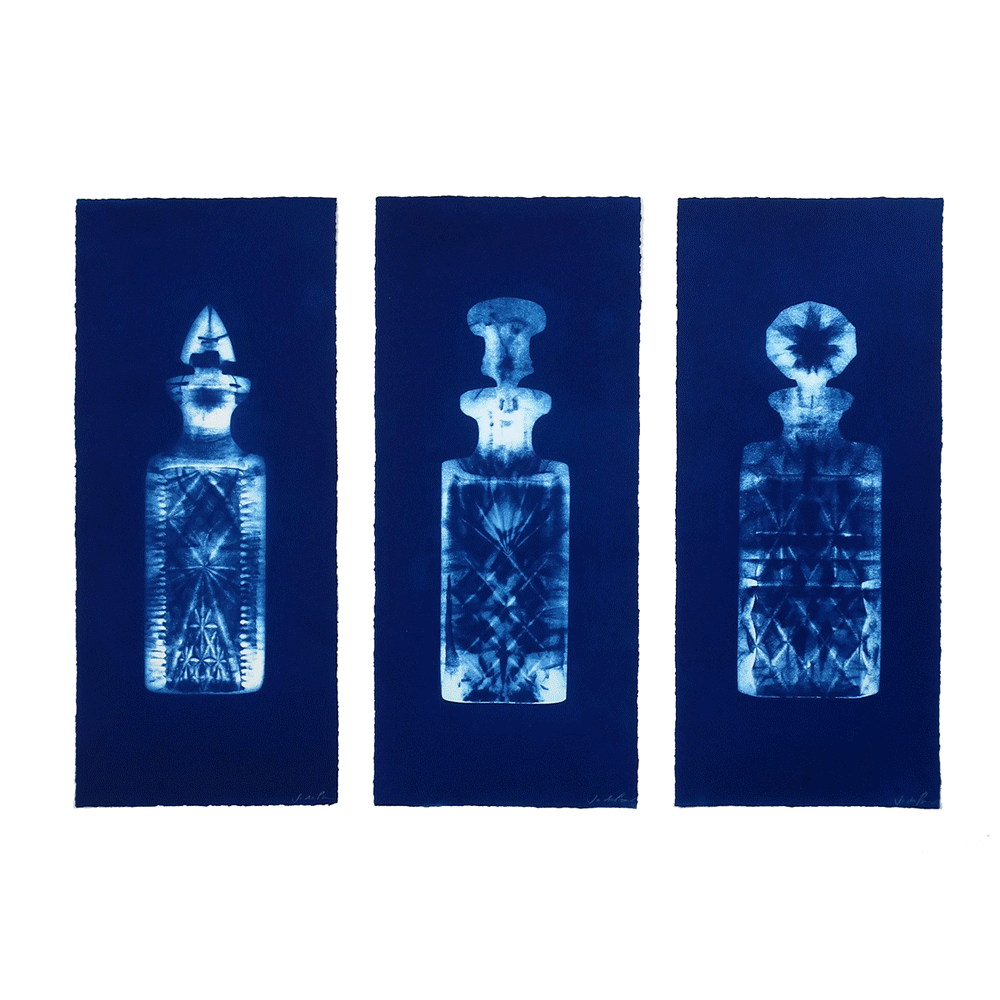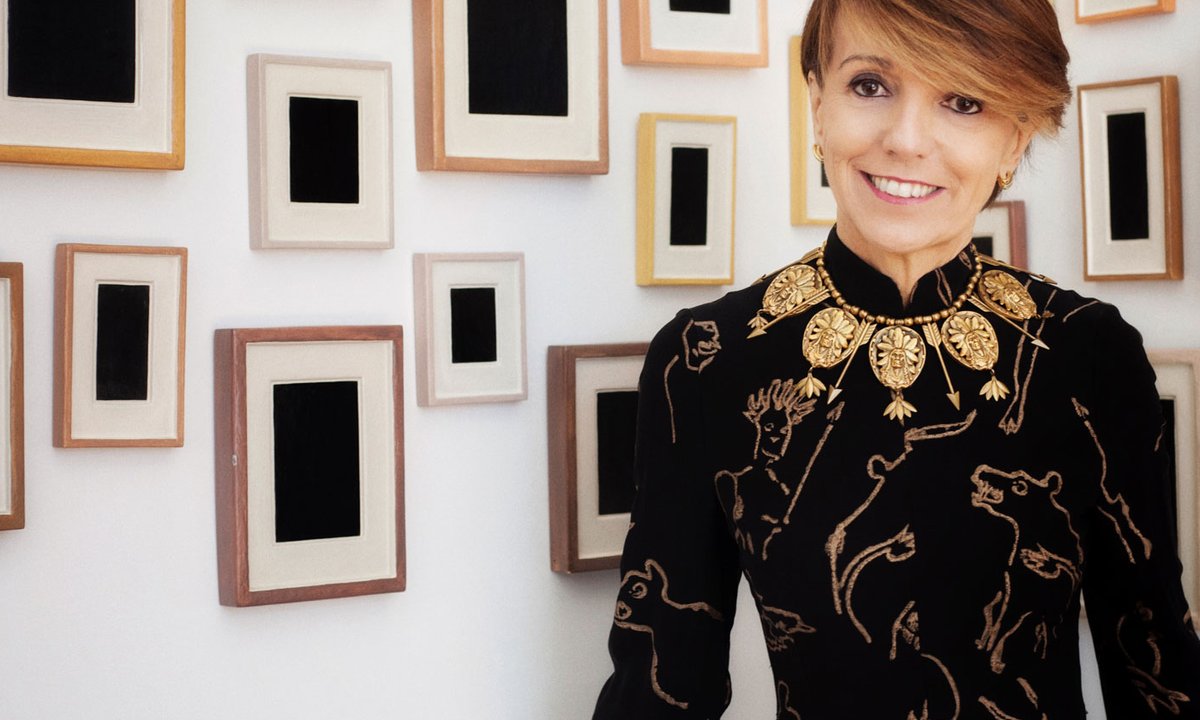100 Hand drawn maps of my country, India
2014 - Drawing & Print (Drawing & Print)
22 x 30 in. / 8.66 x 11.81 cm
Shilpa Gupta
These hand drawn maps are part of an ongoing series begun in 2008 in which Gupta asks ordinary people to sketch outlines of their home countries by memory. Gupta created each map by superimposing 100 separate drawings of each country. The project investigates modern notions of the nation-state, national identity, and borders by looking at countries in which boundaries are contested and the history of the land far precedes such ideas.
Mumbai-based Shilpa Gupta’s practice crosses disciplines and media to include interactive videos, websites, objects, photographs, sound, and public performances. Probing and examining themes such as desire, religion, tradition, gender, global capitalism, social injustice, security, borders, and power, Gupta actively engages herself with the political and cultural world around her.
Colors:
Related works featuring themes of: » Collective History, » Color Photography, » Conflict, » Contemporary Graphic Realism, » Indian
» see more

© » KADIST
Enrique Ramirez
2017Ramirez’s The International Sail is the fifth in a series that features an upside-down worn out, mended and fragmented boat sail...

© » KADIST
Enrique Ramirez
2019Enrique Ramirez’s La Memoria Verde is a work of poetry, politics, and memory created in response to the curatorial statement for the 13th Havana Biennial in 2019, The Construction of the Possible ...

© » KADIST
Claudia Joskowicz
2015Some Dead Don’t Make a Sound (Hay muertos que no hacen ruido) is a single-channel video by Claudia Joskowicz that features the Mexican legend of the Weeping Woman (La Llorona) as its main protagonist...

© » KADIST
Glenn Ligon
2000Glenn Ligon’s diptych, Condition Repor t is comprised of two side-by-side prints...
Other related works, blended automatically
» see more

© » KADIST
Shilpa Gupta
2008The three monkeys in Don’t See, Don’t Hear, Don’t Speak are a recurring motif in Gupta’s work and refer to the Japanese pictorial maxim of the “three wise monkeys” in which Mizaru covers his eyes to “see no evil,” Kikazaru covers his ears to “hear no evil,” and Iwazaru covers his mouth to “speak no evil.” For the various performative and photographic works that continue this investigation and critique of the political environment, Gupta stages children and adults holding their own or each other’s eyes, mouths and ears...

© » KADIST
Enrique Ramirez
2017Ramirez’s The International Sail is the fifth in a series that features an upside-down worn out, mended and fragmented boat sail...

© » KADIST
Enrique Ramirez
2019Enrique Ramirez’s La Memoria Verde is a work of poetry, politics, and memory created in response to the curatorial statement for the 13th Havana Biennial in 2019, The Construction of the Possible ...

© » KADIST
Bani Abidi
2008The threshold in contemporary Pakistan between the security of private life and the increasingly violent and unpredictable public sphere is represented in Abidi’s 2009 series Karachi ...
Related works sharing similar palette
» see more

© » KADIST
Chris Duncan
2010Taken from the title of the incredibly influential punk/hardcore record I AGAINST I by the Bad Brains, Untitled (blue) is an acrylic painting on reflective paper by Chris Duncan is part of a larger body of work titled EYE AGAINST I ...

© » GAS
New Jo de Pear Collectors' Print Sets – Gina Cross - Curator + Mentor Close Thin Icon Close Thin Icon Your cart Close Alternative Icon Now partnered with Art Money for interest free art collecting Now partnered with Art Money for interest free art collecting News Written by Gina Cross Previous / Next Launching on 19 November are 4 new exclusive collectors print sets of Jo de Pear's popular 'Decanters' series...

© » KQED
How LGBTQ+ Hip-Hop Artists Found Their Voices and Changed Culture | KQED Skip to Nav Skip to Main Skip to Footer That's My Word How LGBTQ+ Hip-Hop Artists Found Their Voices and Changed Culture Nastia Voynovskaya Dec 6 Save Article Save Article Failed to save article Please try again Facebook Share-FB Twitter Share-Twitter Email Share-Email Copy Link Copy Link Tupac, Queen Latifah and Page Hodel at Hodel's LGBTQ+ party, The Box, in the early '90s...
Other works by: » Shilpa Gupta
» see more

© » KADIST
Shilpa Gupta
2008The three monkeys in Don’t See, Don’t Hear, Don’t Speak are a recurring motif in Gupta’s work and refer to the Japanese pictorial maxim of the “three wise monkeys” in which Mizaru covers his eyes to “see no evil,” Kikazaru covers his ears to “hear no evil,” and Iwazaru covers his mouth to “speak no evil.” For the various performative and photographic works that continue this investigation and critique of the political environment, Gupta stages children and adults holding their own or each other’s eyes, mouths and ears...

© » KADIST
Shilpa Gupta
2009In Untitled (Sword) , addressing histories of colonialism with abstraction, a large steel blade extends from the gallery wall...

© » KADIST
Shilpa Gupta
2014These hand drawn maps are part of an ongoing series begun in 2008 in which Gupta asks ordinary people to sketch outlines of their home countries by memory...
Related artist(s) to: Shilpa Gupta » Jewyo Rhii, » Hans Ulrich Obrist, » Jimmie Durham, » Michelangelo Pistoletto, » Olafur Eliasson, » Tino Sehgal, » Amar Kanwar, » Cao Fei, » Clara Kim, » Dayanita Singh
» see more

© » KADIST
Tino Sehgal
2004Tino Sehgal’s This Exhibition requires an interpreter (in this particular piece, a gallery attendant) to faux faint each and every time a visitor enters into a given space...
Related works found in the same semantic group
» see more

© » KADIST
Võ An Khánh
2010In Extra Curriculum Political Science Class 7/1972 , a group of women walk bare-foot and single file towards Dat Mui Mangrove in Ca Mau Province to attend ‘political science class’...

© » KADIST
Luis Pazos
1971La Cultura de la Felicidad (The Culture of Happiness) is a series of five photographs addressing everyday life—a couple in a bed, lovers on a bench and a family reunion...






